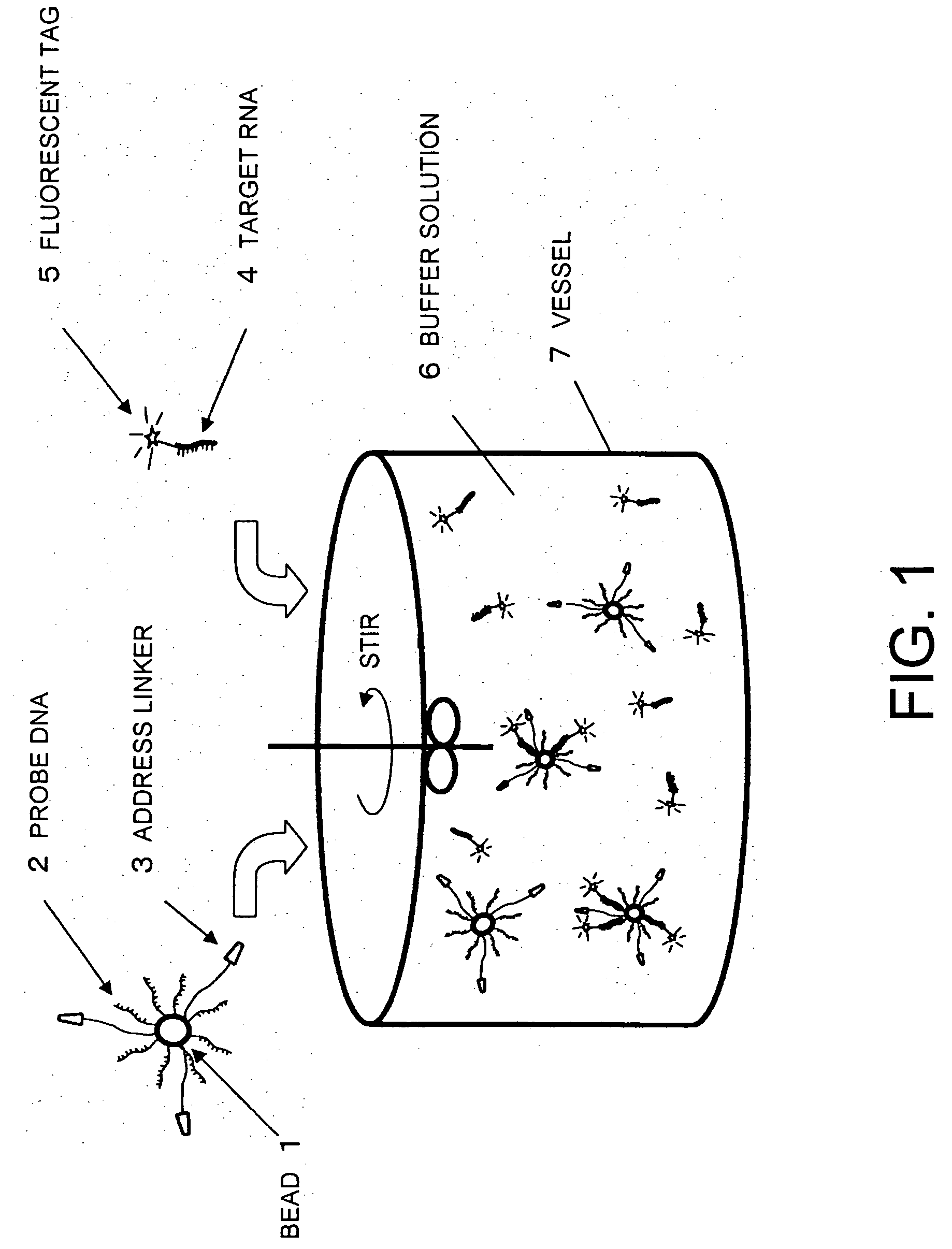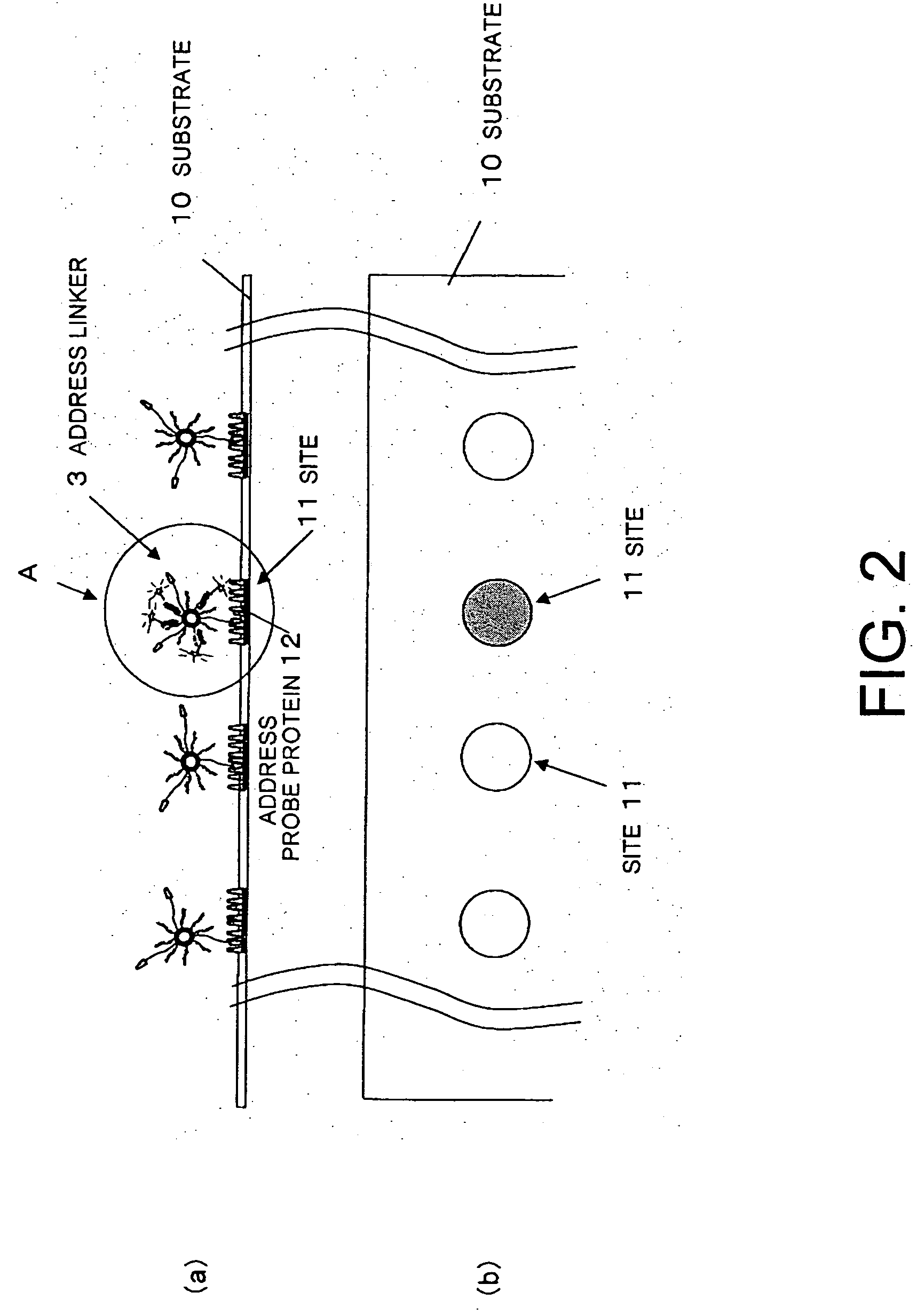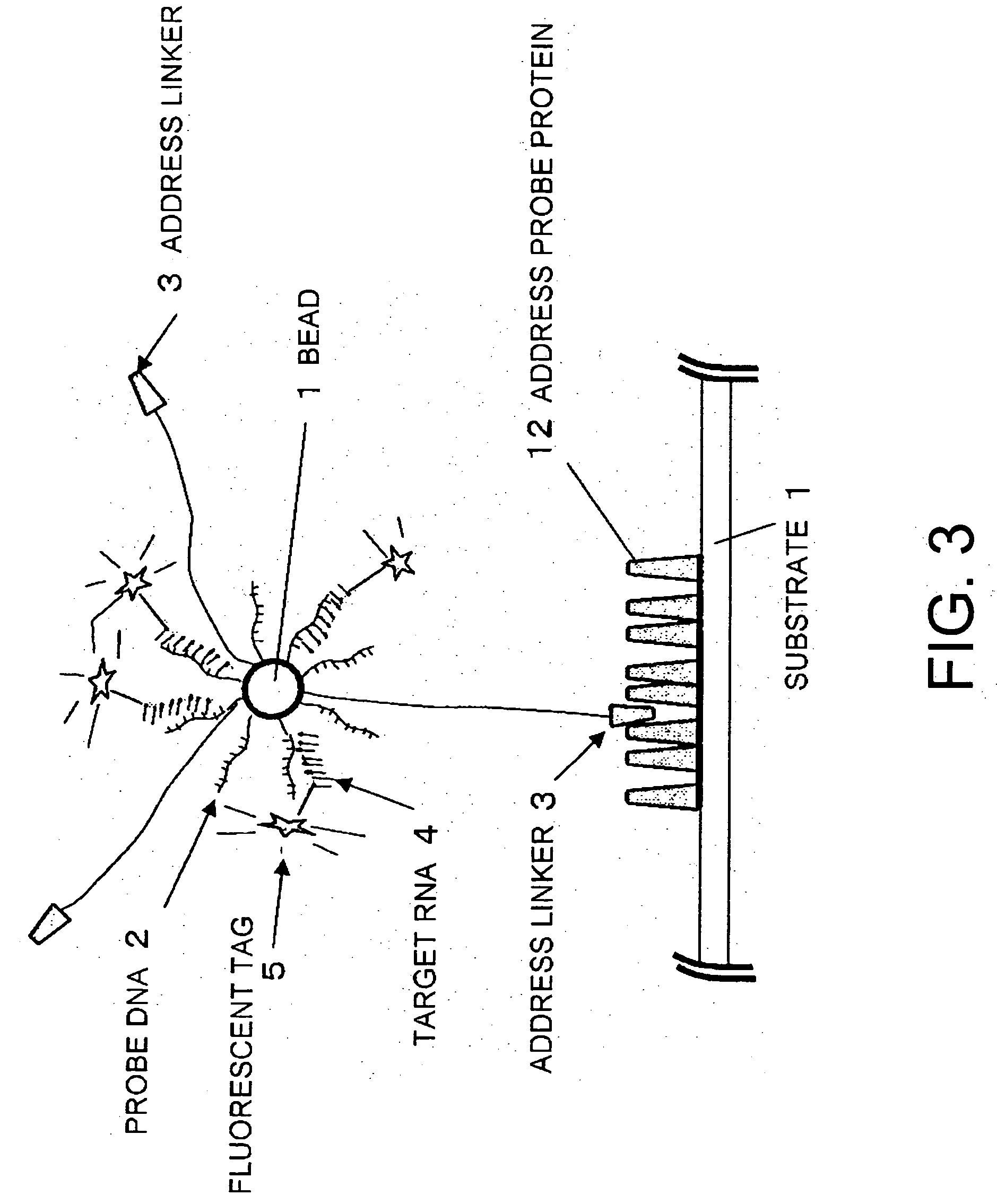Methods for detecting biopolymers; biochips; methods for immobilizing antibodies; and substrates to which antibodies are immobilized
- Summary
- Abstract
- Description
- Claims
- Application Information
AI Technical Summary
Benefits of technology
Problems solved by technology
Method used
Image
Examples
Embodiment Construction
[0016] In the present invention, the advantages of beads and DNA microarrays are combined. The beads provide a greater surface area per volume than a flat plate, and accordingly allow more probe DNAs to be bound. Furthermore, there is an increased frequency of collision between probe DNAs and target molecules due to the increased mobility of beads in a solution compared to a flat plate. Consequently, target DNAs in the solution can be trapped with an improved sensitivity.
[0017] As a drawback, identifying the individual beads to which probe DNAs are bound is required. Various techniques, such as the use of colored beads and a two-color light source, have been tried to solve this problem. However, the number of beads that can be successfully identified is still small, and the equipment becomes more complicated, more expensive, larger, and more difficult to handle. The present invention provides the perfect solution to these problems by utilizing the antigen-antibody interaction that ...
PUM
| Property | Measurement | Unit |
|---|---|---|
| Sensitivity | aaaaa | aaaaa |
| Magnetism | aaaaa | aaaaa |
| Adsorption entropy | aaaaa | aaaaa |
Abstract
Description
Claims
Application Information
 Login to View More
Login to View More - R&D
- Intellectual Property
- Life Sciences
- Materials
- Tech Scout
- Unparalleled Data Quality
- Higher Quality Content
- 60% Fewer Hallucinations
Browse by: Latest US Patents, China's latest patents, Technical Efficacy Thesaurus, Application Domain, Technology Topic, Popular Technical Reports.
© 2025 PatSnap. All rights reserved.Legal|Privacy policy|Modern Slavery Act Transparency Statement|Sitemap|About US| Contact US: help@patsnap.com



